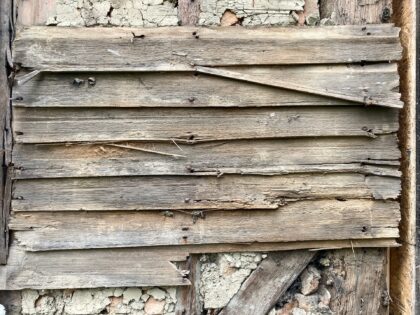We’re completing the final stage of renovations on our historic buildings. The renovation began in 2021 with extensive repairs to the 1747 Meeting House. Now we’re working on repairing the crumbling facade of the Parish House, which was built in 1721 by Nehemiah Hobart, the first minister of First Parish. The Livingstone Company arrived today to begin work.
And we ran into a big surprise.
The front facade was wood milled to resemble masonry blocks. Here’s a 1936 photo showing the facade (click on any photo to see a larger image):
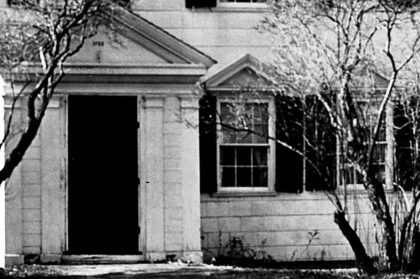
But there was something completely different underneath that.
Under the existing cladding, we found old clapboards. So the front facade was originally covered with clapboards!
Not only that, but the clapboards that were uncovered may be the original 1721 clapboards. They’re attached to the house with what may be hand-made cut nails with forged heads. Each clapboard is about three and a half feet long, and the butt ends are feathered where they overlap. The outer faces of these old clapboards are well weathered, and it appears that they were never painted. [Update, 8/22: A neighbor stopped by who has a graduate degree in historic architecture. He believes the clapboards are pre-Revolutionary War, but later than 1721. He believes they’re from the 1760s.) Here are some photos to show you what we found:
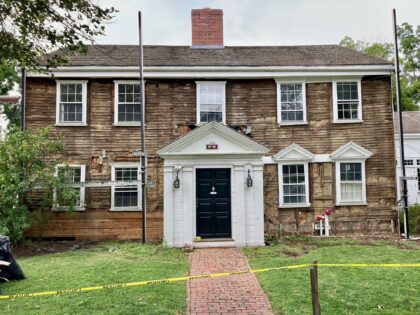
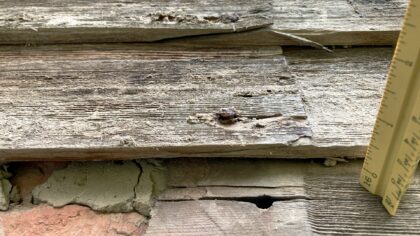
There were some more surprises.
Under the clapboards, the spaces between the frame of the house were filled with old brick and mortar. Some of the bricks appear to be quite old — not the modern water-struck brick, but irregular bricks that may have been hand-made. This apparently served as insulation and/or fireproofing for the house.
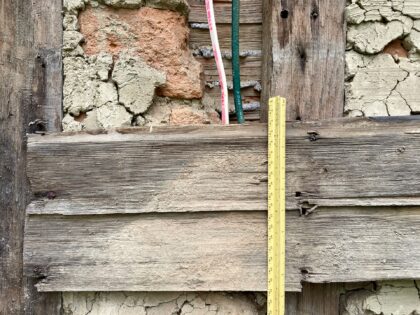
And there were still more surprises in store.
When the triangular pediments over the first floor windows were removed, it appears that the original opening was for taller windows. We were pretty sure that the windows on the front facade were not original (the sash appear to date from the nineteenth century), and this may confirm that supposition.
You could also see where the ends of the floor joists for the second floor were mortised into the girt or cross-wise beam. Notice how the original window frame apparently went right up to the girt, and the opening has been blocked in with a piece of lumber that is machine sawn, not hand hewn. This means the original first floor windows were probably significantly taller than the existing ones. And you can see a builder’s mark, “XII,” which would have indicated which beam went with which post when erecting the finished posts and beams.
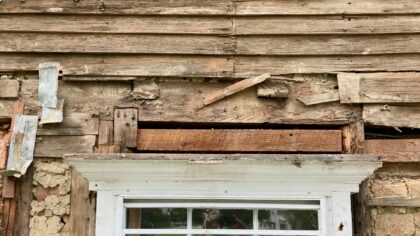
We’re now in the process of consulting with the Cohasset Historic District Commission. We received a permit from them based on replacing wood milled to mimic stone. But it’s now clear that this was a much later addition to the building. (I’m guessing it was added at least a hundred years after the house was built, i.e., in the nineteenth century.)
In any case, it has been an exciting day today, as we learned a lot more about our historic 1721 Parish House.
I’ll include a couple more photos below, for those who can’t get enough of historic buildings.
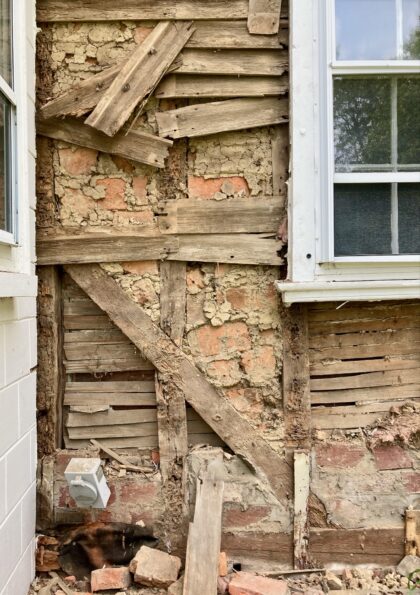 Text and photos (c) Dan Harper (except 1936 photo, which is public domain). Crossposted.
Text and photos (c) Dan Harper (except 1936 photo, which is public domain). Crossposted.

